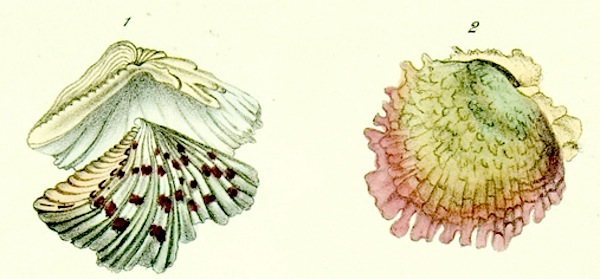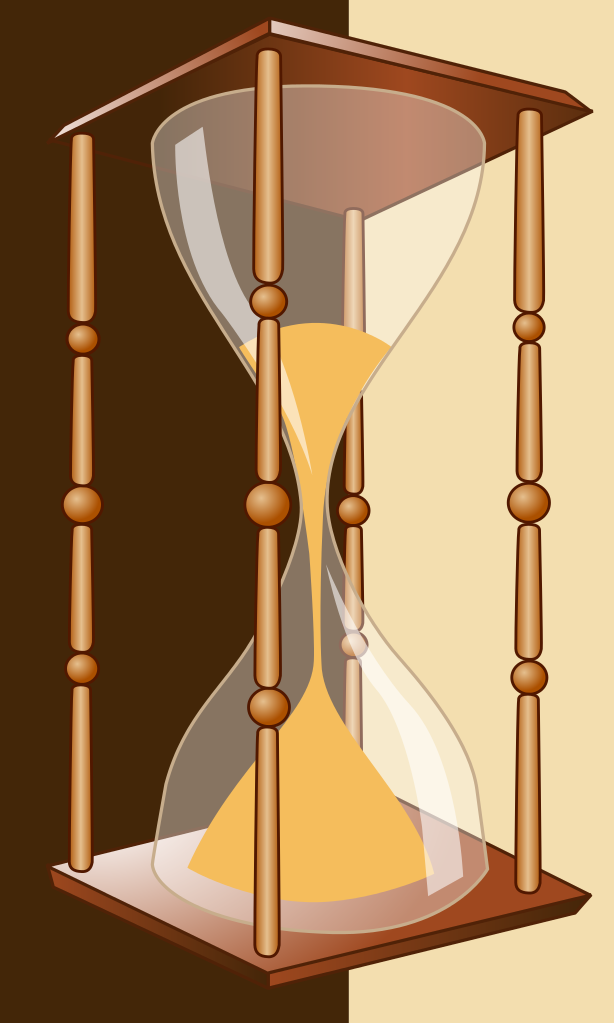As NASA's Lucy probe sped by the asteroid Dinkinesh at 10,Gary Eberhart Archives000 mph, mission scientists spotted a surprise: This asteroid was actually two asteroids.
The space agency found that a smaller space rock some 720 feet across (220 meters) orbited the half-mile wide (790 meters across) Dinkinesh. Or so it appeared. Now, upon closer inspection, they've realized that smaller asteroid is actually two asteroids.
"As NASA’s Lucy spacecraft continued to return data of its first asteroid encounter on Nov. 1, 2023, the team was surprised to discover that Dinkinesh’s unanticipated satellite is, itself, a contact binary — that is, it is made of two smaller objects touching each other," NASA wrote in an update.
SEE ALSO: NASA spacecraft keeps on going faster and faster and fasterIn the image below, snapped from 1,010 miles (1,630 km) away, you can see Dinkinesh on the left and the intriguing contact binary on the right.
 The half-mile-wide asteroid Dinkinesh on the left and the intriguing contact binary on the right. Credit: NASA / Goddard / SwRI / Johns Hopkins APL
The half-mile-wide asteroid Dinkinesh on the left and the intriguing contact binary on the right. Credit: NASA / Goddard / SwRI / Johns Hopkins APL This Tweet is currently unavailable. It might be loading or has been removed.
The Lucy mission is en route to the mysterious and never-explored Trojan asteroids — trapped in two swarms around Jupiter and thought to be pristinely preserved building blocks of planets. The mission's first target is now known to be three asteroids. It's a target that mission planners wanted to visit before reaching the Trojans, to test the spacecraft's crucial abilities to track these distant objects at blazing speeds.
This is the first contact binary asteroid planetary scientists have ever spotted in orbit around another space rock.
"We haven’t seen many up close, and we’ve never seen one orbiting another asteroid," John Spencer, the mission's deputy project scientist at the Southwest Research Institute, said in a statement. "We’d been puzzling over odd variations in Dinkinesh’s brightness that we saw on approach, which gave us a hint that Dinkinesh might have a moon of some sort, but we never suspected anything so bizarre!"
Want more scienceand tech news delivered straight to your inbox? Sign up for Mashable's Light Speed newslettertoday.
 From a farther-away vantage point ("B"), mission scientists could see a better view of the surprise asteroids. Credit: Overall graphic: NASA / Goddard / SwRI // Inset "A": NASA / Goddard / SwRI / Johns Hopkins APL / NOIRLab // Inset "B": NASA / Goddard / SwRI / Johns Hopkins APL
From a farther-away vantage point ("B"), mission scientists could see a better view of the surprise asteroids. Credit: Overall graphic: NASA / Goddard / SwRI // Inset "A": NASA / Goddard / SwRI / Johns Hopkins APL / NOIRLab // Inset "B": NASA / Goddard / SwRI / Johns Hopkins APL The Lucy mission, named after the ancient remains of the famous fossilized human skeleton, will loop through the solar system, without slowing down, to investigate a half-dozen Trojan asteroids. They're like "fossils" from our solar system's formation from some 4 billion years ago; the untarnished Trojans are the type of smaller rocky and icy objects that would have contributed to making planets. It will help researchers understand how Earth, and the other planets, formed.
Each encounter will speed by at around 10,000 mph, capturing a wealth of information with an assortment of cameras, including one (a spectrometer) that can deduce what the asteroids are made of.
"We're not going to be able to blink," Hal Levison, a planetary scientist who leads the unprecedented mission to investigate the Trojans, told Mashable last year.
 What Wittgenstein Learned from Teaching Elementary School
What Wittgenstein Learned from Teaching Elementary School
 “True Story”: Some Advice for the Raconteurs of the World
“True Story”: Some Advice for the Raconteurs of the World
 Velveeta, Light of my Life, Fire of My Loins
Velveeta, Light of my Life, Fire of My Loins
 Against Fear
Against Fear
 Sandy Skoglund’s Collages Put the 1980s in a Sharp New Light
Sandy Skoglund’s Collages Put the 1980s in a Sharp New Light
 It’s Carving Time: Thanksgiving Advice from the 1950s
It’s Carving Time: Thanksgiving Advice from the 1950s
 Paradise Fire: Photography by David Benjamin Sherry
Paradise Fire: Photography by David Benjamin Sherry
 SpaceX's Starlink will provide free satellite internet to families in Texas school district
SpaceX's Starlink will provide free satellite internet to families in Texas school district
 The Optimist’s Creed (Or, Donut Philosophy)
The Optimist’s Creed (Or, Donut Philosophy)
 Best iPad deal: Save $132 on Apple iPad (10th Gen)
Best iPad deal: Save $132 on Apple iPad (10th Gen)
 The Continuing Adventures of Helvetica Man, and Other News
The Continuing Adventures of Helvetica Man, and Other News
 Edgar Allan Poe’s Only Best
Edgar Allan Poe’s Only Best
 Retail Therapy: Notes on Giving and Shopping
Retail Therapy: Notes on Giving and Shopping
 Chinese scientists have cloned two monkeys to advance human medicine
Chinese scientists have cloned two monkeys to advance human medicine
 Massive Pissed Love: An Interview with Richard Hell
Massive Pissed Love: An Interview with Richard Hell
 The Sour Shopkeeper
The Sour Shopkeeper
 No Known Remedy: My Problem with Flies
No Known Remedy: My Problem with Flies
 Amazon Big Spring Sale 2025: Save $170 on Dyson Hot+Cool
Amazon Big Spring Sale 2025: Save $170 on Dyson Hot+Cool
 How Van Gogh Discovered Art in the Borinage
How Van Gogh Discovered Art in the Borinage
Arsonist pet tortoise starts fire that burns neighbor's home and causes $150,000 in damageMaisie Williams makes Twitter request, gets more than she bargained forJenny Hoyos shares the secret to turning YouTube views into a businessSkrillex reunites with From First To Last because emo is forever'The Young Pope' is not here to make friends'Sherlock' Season 4 finale weaves an exhausting, tangled webThanks to Trump, Rep. John Lewis is dominating Amazon's bestsellers listArsonist pet tortoise starts fire that burns neighbor's home and causes $150,000 in damageNBD, just a massive alligator out for a strollPrepare to be very jealous of President Obama's custom Air JordansSpaceX returns to flight in style, launching satellites and landing another rocketDoctors take inspiration from online dating to build organ transplant AIJools Lebron, Ruba Wilson, and more come together to discuss being LGBTQ creators.Prepare to be very jealous of President Obama's custom Air JordansThe internet is loving this pizza guy's brutally honest 'sick note'Kickstarter joins NYC effort to close wage gap by not asking about employee salary historyDancer busts gravityJennifer Holliday cancels Trump inauguration performance, apologizes to LGBT communityChinese people will make 3 billion trips for the Lunar New Year this monthJennifer Holliday cancels Trump inauguration performance, apologizes to LGBT community Starve a Fever, Feed a Cold by Robin Bellinger Alberta Sings the Blues by Patrick Monahan Leanne Shapton by Thessaly La Force Wisława Szymborska by Lorin Stein James Shea’s “Haiku” by Sarah Braunstein Lamb Chop in Search of a Martini by Matt Weinstock Selected Letters of William S. Burroughs by William Burroughs Only One Day to Go! by The Paris Review The London Library by Orlando Whitfield Part 3: Time’s a Goon by Clancy Martin Satanic Seduction; Dufus Casanovas by Lorin Stein Staff Picks: Keith Haring’s Journals, ‘Library’ by The Paris Review Staff Picks: Modernist Journals, France Gall by The Paris Review Design for Living by Elaine Blair John Berryman’s “Dream Song #14” by Jana Prikryl Ezra Pound’s “Exile’s Letter” by Edmund White Paul Maliszewski on ‘Prayer and Parable’ by Amie Barrodale Alan Bennett on ‘Smut’ by Jonathan Gharraie An Interview with Lysley Tenorio After Patricia by Joan Schenkar
2.6073s , 10136.796875 kb
Copyright © 2025 Powered by 【Gary Eberhart Archives】,Fresh Information Network